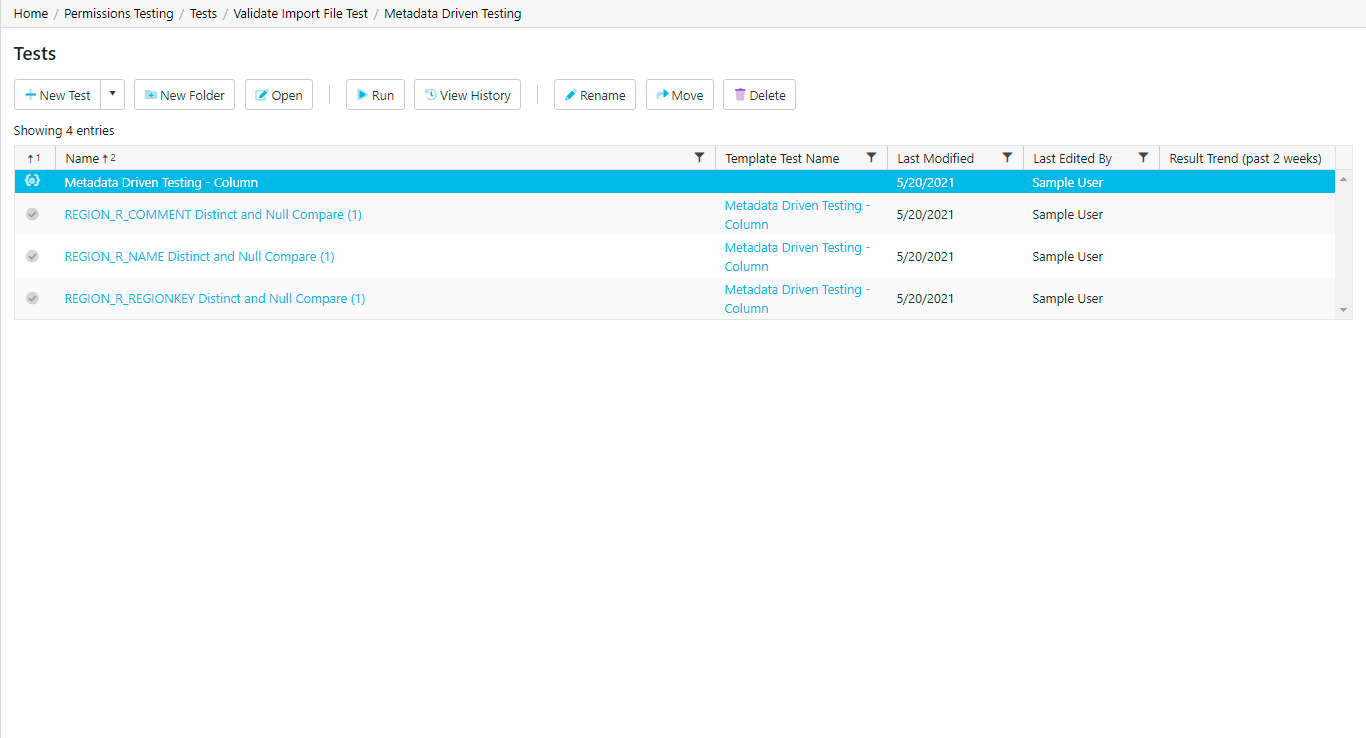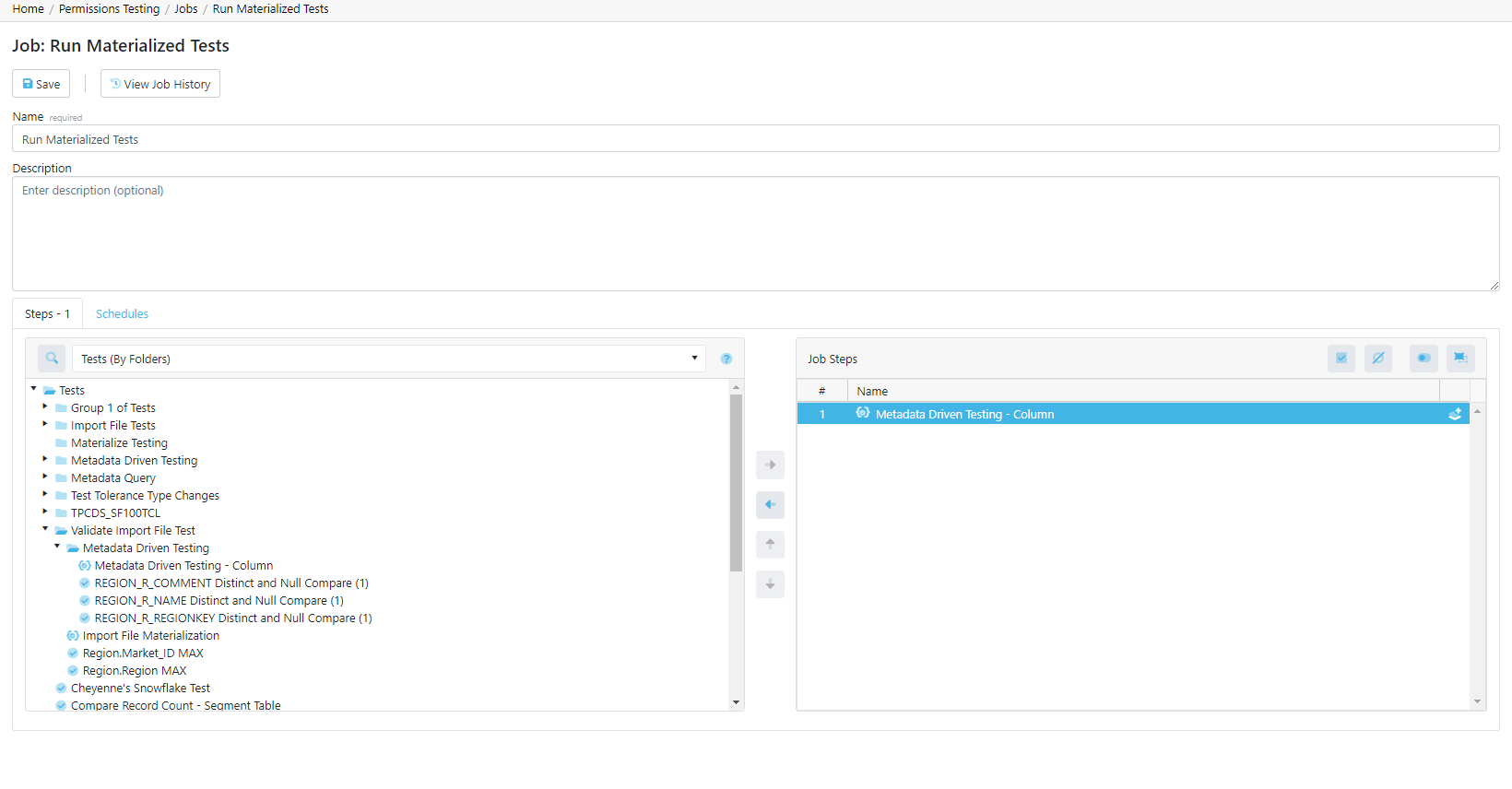Overview
After materialization, you can think of child tests as a standard Validatar test that was created from a template. Because of this, child tests can be run from the template test configuration screen, the test repository after materialization, or as part of a job just like a standard test.
From the Template Test Screen
- When running child tests from the template test screen there are a few configuration options to choose from. You can either choose to run a single child test, which is recommended to validate that your test was created and runs as expected, or you can run all child tests at once. If you choose to run a single child test you have the option to choose which test runs.
- Next, choose where to send the test results. Similar to a standard test, results can be sent to the screen for one-time viewership or be saved in the test repository. Note that if you choose to run all child tests instead of a single child test, you can only send results to the test repository.
Advanced Configuration
There is also an option to configure how many tests will run in parallel. This option allows multiple tests to run simultaneously which helps with optimization. The default setting is 10.

If the template has been modified since the last time child tests were materialized, you will be prompted to materialize child tests before you run the tests.
From the Test Repository
Template tests can also be run from the test repository screen by selecting the template test record and clicking the Run button on the toolbar. This process will display the same Run Test pop-up configuration window that appears on the template test screen.

Not only can you run all child tests from the template itself, but you can also run each test as a standard test. Select the appropriate test standard test, which is identified by the checkmark icon next to it, and either select the Run button on the toolbar or drill into the test interface and run the test from there.
Within a Job
Another option to execute child tests is to add the template test or multiple child tests to a job. Adding the template test itself ensures that no child test is accidentally excluded from the job resulting in total test coverage for your metadata objects.
- Just select the template test on the left-hand side and move it over to the Job Steps on the right.

- Once the template is added to the job step list, select the materialize icon to the right of the template name to choose if you want to materialize the child tests before execution. If you do, you will be given a list of materialization settings to choose from.

- Update the configuration, save the job, then navigate back to the Job Repository screen to run the job or add a schedule to the job for it to run automatically.